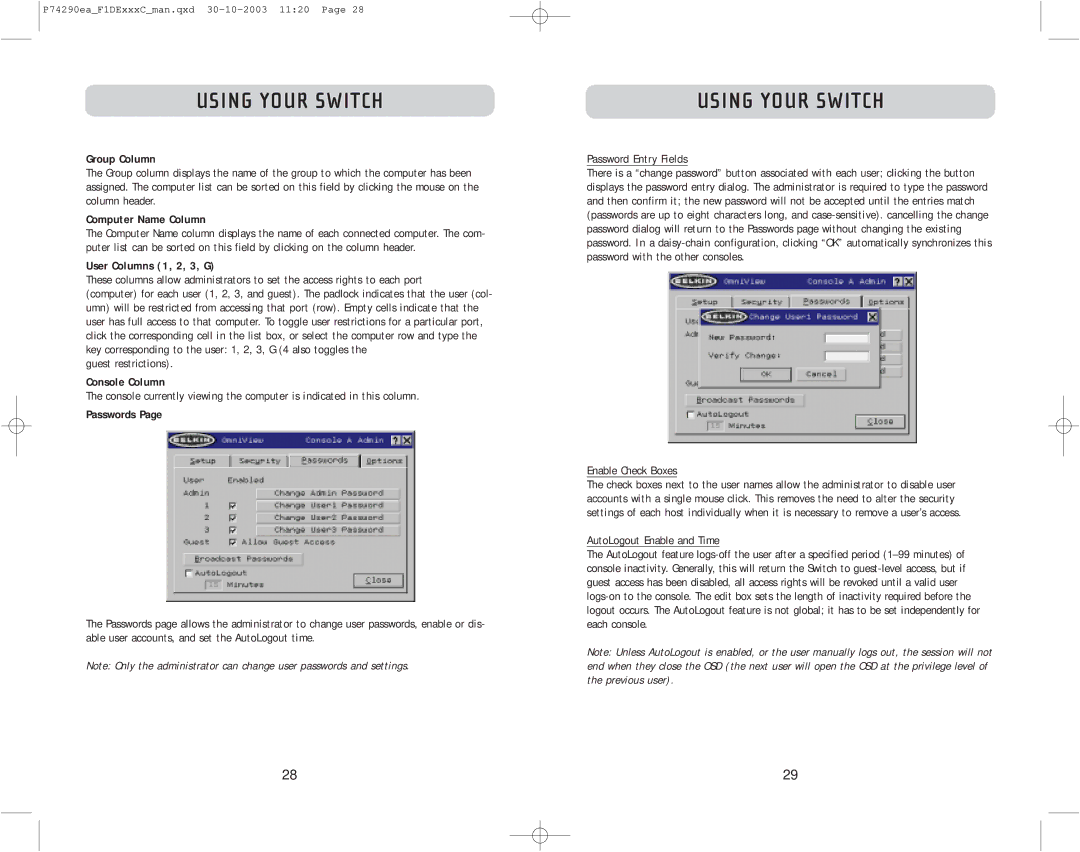
P74290ea_F1DExxxC_man.qxd
USING YOUR SWITCH
Group Column
The Group column displays the name of the group to which the computer has been assigned. The computer list can be sorted on this field by clicking the mouse on the column header.
Computer Name Column
The Computer Name column displays the name of each connected computer. The com- puter list can be sorted on this field by clicking on the column header.
User Columns (1, 2, 3, G)
These columns allow administrators to set the access rights to each port
(computer) for each user (1, 2, 3, and guest). The padlock indicates that the user (col- umn) will be restricted from accessing that port (row). Empty cells indicate that the user has full access to that computer. To toggle user restrictions for a particular port, click the corresponding cell in the list box, or select the computer row and type the key corresponding to the user: 1, 2, 3, G (4 also toggles the
guest restrictions).
Console Column
The console currently viewing the computer is indicated in this column.
Passwords Page
The Passwords page allows the administrator to change user passwords, enable or dis- able user accounts, and set the AutoLogout time.
Note: Only the administrator can change user passwords and settings.
USING YOUR SWITCH
Password Entry Fields
There is a “change password” button associated with each user; clicking the button displays the password entry dialog. The administrator is required to type the password and then confirm it; the new password will not be accepted until the entries match (passwords are up to eight characters long, and
Enable Check Boxes
The check boxes next to the user names allow the administrator to disable user accounts with a single mouse click. This removes the need to alter the security settings of each host individually when it is necessary to remove a user’s access.
AutoLogout Enable and Time
The AutoLogout feature
Note: Unless AutoLogout is enabled, or the user manually logs out, the session will not end when they close the OSD (the next user will open the OSD at the privilege level of the previous user).
28 | 29 |
